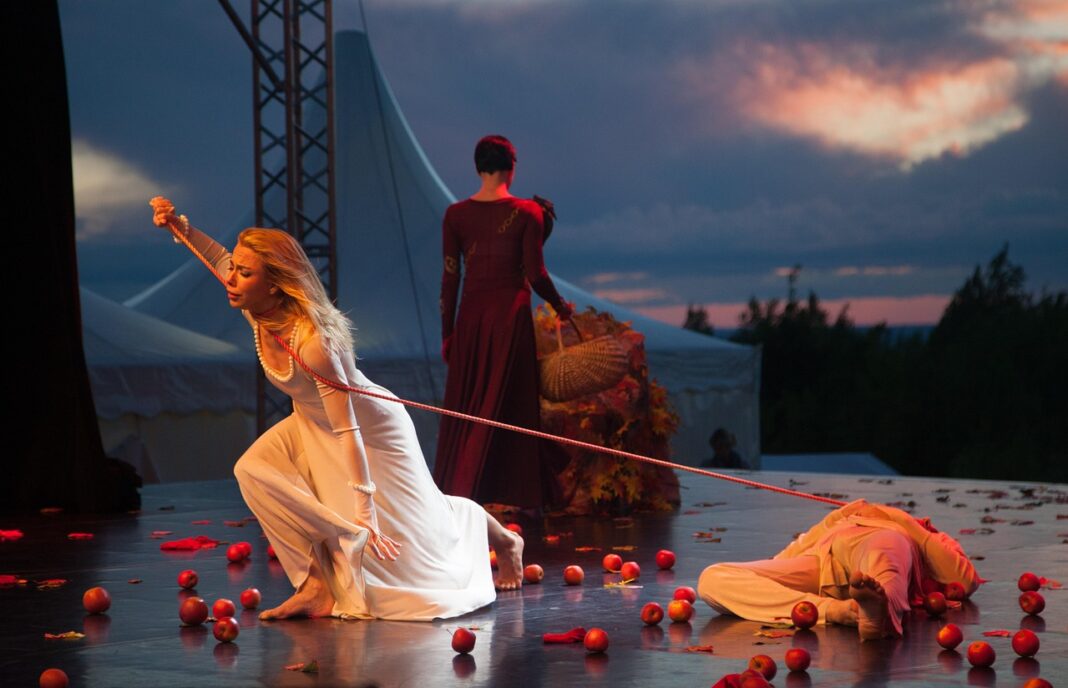Happy New Year, everyone! At the end of 2024, we explored the benefits of opera; the blog post can be found here. In the post, there was a brief mention between the parallels in Mozart’s and Shakespeare’s works. Here, let us consider this connection a bit deeper in depth.
Mozart’s Background:
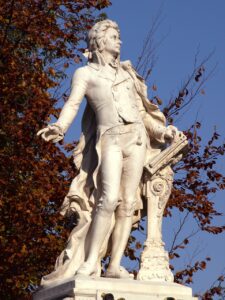
(Wolfgang Amadeus Mozart’s statue)
Wolfgang Amadeus Mozart, an Austrian composer, is widely recognized as one of the greatest composers in Western music. He is part of a family of good standing, which included architects and bookbinders. In his family, only him and his sister were two of their parents’ seven children to survive. At their young ages, the two had keen talent for music so their father would send them to play at courts, and even noble houses.
In mid 1763, the family had set out for a tour to all the main musical centers of Western Europe. At age 13, Wolfgang had received greater hopes for his potential success in his international composer career. Then, he worked tirelessly and created his first opera, Mitridate, and several other successful operas, including Lucio Silla and Don Giovanni.
In the 18th century, Mozart took an innovative approach to composition, painted it with symphonic forms and lyrical melodies, and expanded the boundaries of classical music. His works would deeply influence other composers, such as Beethoven, to integrate his ideas into their works.
Shakespeare’s Background:
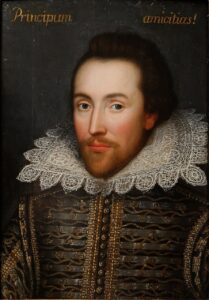
William Shakespeare is famously known as a poet, dramatist, and actor. Like Mozart, he also possesses a unique standing in the literature world. Records of most of his early life are unclear, but what is clear is that in his early life in Stratford-upon-Avon, England, his education mostly consisted of Latin studies. Instead of going to university, he married Anne Hathaway of Stratford and became a father of two daughters and one son; his son was notably named as Hamnet, who died at 11 years old.
The following 8 years after Hamnet’s death were unclear, but within that time interval, his name began to appear in the London theater records. What can be inferred about his life is that he devoted the next 20 years after that to his art, writing more than a million words of his high quality of the poetic drama. Some of his well-known plays are Romeo and Juliet, Macbeth, and Hamlet.
Shakespeare is a writer with great intellect and incredible poetry power, two of many of his skills that are proven in his poems and his playwright. His work transcended national barriers and also inspired many other authors and playwrights, including Charles Dickens, Leo Tolstoy, and Dante.
Life Connections:
Evidently, both Mozart and Shakespeare stand as idols in their respective arts. The two had made tremendous efforts into their works and are inspirations for many other artists. They each took a unique and innovative approach, creating literature and drama that provide invaluable insight to life.
Of course, Mozart and Shakespeare had different early lives: Mozart’s career had started early in his childhood with his family, whereas Shakespeare had married first and worked privately.
Today, it is clear that both artists have created numerous literature that can speak more to life than we may be able to think. In school, it is often said that the best way to read Shakespeare is to read it aloud. The same is said with drama plays, including operas. Mozart’s and Shakespeare’s are not just words on paper, but ideas that are meant to be applied to life.
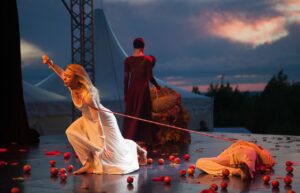
Can Shakespeare’s and Mozart’s work be mixed?
If both of their works can be integrated into life, then is it possible to mix both of their works? Yes! In fact, the first Shakespearean opera had been said to have held at the end of the 17th century with Henry Purcell’s The Fairy Queen.
Indeed, there is a history of Shakespearean-inspired operas. This not only demonstrates the interconnection of life’s lessons, but the crossover proves that Mozart’s and Shakespeare’s works can be mixed. To simplify the exploration of this history, I do want to thank Stephania Romaniuk (who I interviewed for The Benefits of Opera post) for inspiring me with two composers to explore.

Giuseppe Verdi (Composer that changed Italian Opera):
Giuseppe Verdi, although he never learned English, loved Shakespeare through Italian translation. As Shakespeare transformed English plays, Verdi, inspired by him, infused old musical formulae with real characters and drama.
Verdi’s first Shakespearean opera was Macbeth. Up to this day, we take this work, especially Lady Macbeth’s sleepwalking moment, as Verdi’s earliest instances of being inspired by Shakespeare. Despite evidence of Verdi expressing interest in many other Shakespearean inspirations, he only completed two other inspired operas: Otello and Falstaff.
In Shakespeare’s Henry IV, the character of Falstaff appeared in it. Henry IV had been seen as one of Shakespeare’s weakest efforts; Verdi viewed this as an opportunity to strengthen Shakespeare’s character of Falstaff. Compared to many of Verdi’s plays, he rarely wrote comedy, but his work of Falstaff made people smile, rather than cry. Falstaff was the last music that he wrote that brought human joy to the Italian opera without violating the primacy of voice.
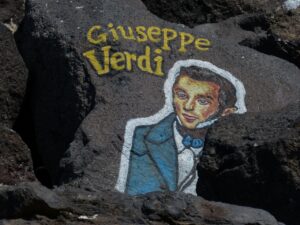
(In memory of Giuseppe Verdi)
John Adams (Contemporary American composer):
Shakespearean-inspired operas are still being created today. John Adams is a contemporary composer that draws his compositions on broader sources, including pop, jazz, and electronic music. He states that “if opera is actually going to be a part of our lives…it has to deal with contemporary topics”. Similar to Verdi’s transformation of Italian opera, John Adams was recognized for his combination with opera and modern lives. This subtly relates to Shakespeare’s influence and Mozart’s music.
Adams’ opera compositions include Nixon in China in 1987; The Death of Klinghoffer in 1991; and Doctor Atomic in 2005. All of which relate to recent world events, especially World War II and Doctor Atomic being inspired by physicists Oppenheimer (the movie Oppenheimer is also based on him!)
With many awards, such as the 1988 Grammy award and numerous honors, John Adams is recognized for his works. This recognition reveals that contemporary operas can attract modern audiences. Mixed in with Shakespearean lessons and Mozart’s music, the contemporary addition can encourage entertainment and insight to opera audiences around the world.

TL;DR
Mozart’s composer career had begun with his family concerts, whereas Shakespeare’s playwright career began after he became father. Both of their natural talents and dedicated efforts led to their successful careers. Shakespeare’s plays and Mozart’s operas both teach insightful ideas that are meant to be explored and applied to life. Their works are so interconnected with life that they can be combined. Giuseppe Verde transformed Italian opera as he evoked a tone of happiness after being heavily inspired by Shakespeare’s works, and without compromising the dominant usage of voice in operas. In the contemporary setting, John Adams is one among many composers to showcase success in adding pop, jazz, and electronic music to operas. Shakespearean lessons, Mozart’s music, and contemporary addition may serve to fulfill entertainment and insight to opera worldwide.
Fun Fact: The Calgary Jubilee Auditorium’s next opera performance is Don Pasquale! Their performance dates are February 1st, 5th, and 7th, 2025!

